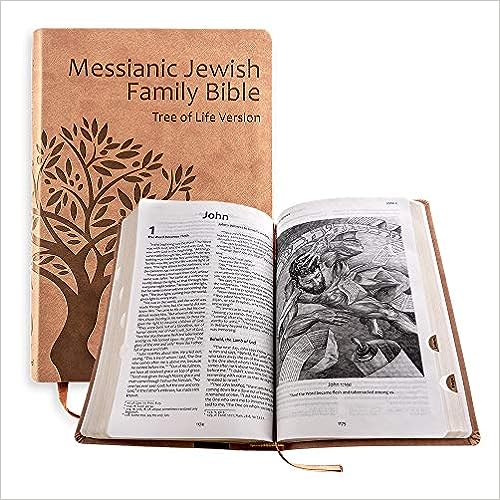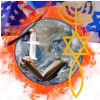Bible Translations
I've been asked many times, "Pastor what translation are you using?"
hmm, not that easy to answer, as my first reaction is every bible translation is a politically correct version. hmm, what do you mean with this statement.
If we look for example to the King James Version, it states Authorized Version. Authorized by whom, meaning the the authorizing authority needed to be in agreement and not be offended by the translation. This is stated maybe a little exasurated, and black and white, but further down this article it will make sense, I promise.
A better question is, what kind of translations will you not use?
There is a diverse array of Bible translations available, each with its own unique approach to rendering the ancient texts into modern languages. These translations can generally be categorized into three main types: literal, dynamic equivalence, and paraphrase.
 Literal Translations
Literal Translations
These translations aim to provide a word-for-word rendering of the original text into the target language, often prioritizing accuracy and fidelity to the original languages. Examples of literal translations include the King James Version (KJV), the New American Standard Bible (NASB), and the English Standard Version (ESV). Literal translations are favored by many scholars and those who value close adherence to the original languages.
Dynamic Equivalence Translations
Also known as thought-for-thought translations, these versions seek to convey the meaning and intent of the original text in a more contemporary and idiomatic manner. Dynamic equivalence translations prioritize readability and accessibility over strict adherence to the exact wording of the original languages. Examples of dynamic equivalence translations include the New International Version (NIV), the New Living Translation (NLT), and the Contemporary English Version (CEV). These translations are often preferred for personal and devotional reading due to their clarity and ease of understanding.
Paraphrase Translations
Paraphrase translations take a more interpretive approach, aiming to convey the concepts and ideas of the original text in a highly accessible and colloquial style. These versions may take greater liberties with the wording and structure of the text in order to convey its meaning in a modern context. Examples of paraphrase translations include The Message, The Living Bible (TLB), and The Amplified Bible (AMP). Paraphrase translations are often used for casual reading and for gaining fresh insights into familiar passages.
Within these broad categories, there are also variations and hybrid approaches that combine elements of literal and dynamic equivalence translation methods. Additionally, there are translations specifically tailored to certain audiences, such as children, teens, or speakers of specific dialects or languages.
What to use
Out of these diverent groupings I prefer the Literal Translations seen from a Jewish Perspective as in the Tree of Life Version, however there are often times that I will be using translations from the Paraphrase or thought for thought categories, as in the Amplified Bible, or the Common English Bible (which are most commonly used by me including the complete Jewish Bible). Also the Tanach and Torah from the Jewish Publishing Society are frequently included. When using the NIV I personally only do this from the 1984 Edition for reasons mentioned in the next paragraphs.
As I stated earlier all versions are politically correct versions, I do not adhere to one or another. My believe is that am guided by the Holy Spirit on what version to use and how to write or translate the text.
Within the Second Section the Dynamic Equivalent Translations the NIV is mentioned.
NIV Version
As stated earlier concerning the NIV I do only use the 1984 edition, as I believe that with the TNIV and the 2011 editions they went completely of on the looney side with not just politically correct, but also woke and worse translated text.
The “New International Version” (NIV) was conceived in 1965 and after several years of study by committees from the Christian Reformed Church and the National Association of Evangelicals, it was felt there was a need for a new translation in contemporary English. The first printing of the entire Bible was in 1978, and it became one of the largest selling bible translations on the market.
All well and good until 2005 when Zondervan published the “Today’s New International Version” (TNIV), a more gender-inclusive translation of certain terms. Because of its controversial gender inclusiveness, the TNIV was the subject of a great deal of criticism from the evangelical world and went out of print in 2009. In March, 2011, Zondervan once again published a new edition, the “2011 New International Version.” This edition will totally replace the 1984 NIV, which will no longer be published.
Like its predecessor, the TNIV, the 2011 NIV was translated using gender-neutral translation rules, resulting in the replacement of gender-specific words (e.g. man, woman, he, she, son, daughter) with gender-neutral words (e. g. person, they, child). In many cases these replacements are made even when the original language clearly intends a specific gender. Further, the 2011 NIV alters key verses that define the roles of women (See I Timothy 2:12 and Nahum 3:13), which may allow for interpretation consistent with our culture today, but which do not accurately reflect the original language of the Scriptures.
It has over 3600 Gender neutral phrases and worse that I cannot support and thus will under no circumstance use this version or suggest it for use. My favorite version is indeed the Tree of Life Version.

Tree of Live Version (TLV)
The Tree of Life Version (TLV) of the Bible is a relatively recent translation that seeks to provide a fresh and accurate rendering of the Scriptures for English-speaking readers, while also incorporating Jewish cultural and linguistic elements. The Tree of Life Version is a unique translation that seeks to bridge the gap between Jewish and Christian readership by presenting the Scriptures in a way that honors both traditions while remaining faithful to the original texts. Its basis in the Masoretic Text and the Nestle-Aland Greek New Testament, along with its focus on Jewish cultural and linguistic elements, makes it a valuable resource for those seeking a deeper understanding of the Bible from a Jewish-Christian perspective.
for more infomation on the TLV check out the TLV Bible Society
Pst. Chris


























